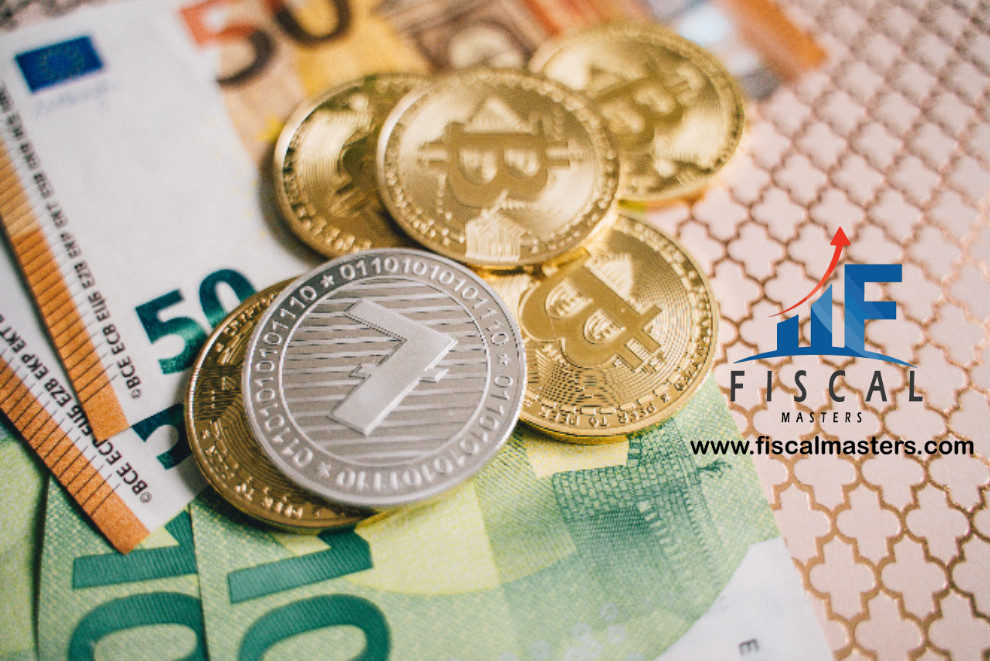Getting into the world of Bitcoin mining? Learn about Bitcoin mining’s strategies, remarkable features, seize the potential benefits, and be aware of the risks that lie ahead.
Bitcoin stands tall as the pioneer and powerhouse among all digital currencies. As the backbone of the blockchain network, mining is essential for verifying transactions and adding new blocks to the ever-expanding network.
Bitcoin mining requires careful planning and strategic thinking to be profitable. Learning how Bitcoin mining works is critical for anybody seeking knowledge about this unique digital phenomenon as cryptocurrencies continue to capture the worldwide financial sector. Whether you’re a novice seeking to grasp the basics or a seasoned enthusiast looking for the latest tips and tricks, this comprehensive blog has got you covered.

What is Bitcoin Mining?
Bitcoin mining is just like a digital treasure hunt! It is the process of creating new Bitcoins and verifying and adding transactions to the blockchain. It is a critical element of the Bitcoin chain that protects the system’s validity and reliability.
Miners compete to solve complex puzzles, and the lucky winner claims a Bitcoin bundle as their prize. However, mining isn’t a walk in the park. It demands a lot of effort, money, and patience. Miners, equipped with powerful hardware, compete to solve complex mathematical problems.
The authority to add a new block to the network is awarded to the very first miner who finds a correct fix and is rewarded with freshly minted Bitcoins and transaction fees.
Key takeaways: Making Bitcoin mining easier for you
- Mining allows you to acquire Bitcoin without needing to put a penny down.
- Bitcoin mining is the procedure of validating new transactions against the Cryptocurrency network, which leads to the creation of new bitcoins.
- It is accomplished by solving complicated cryptographic hash problems to validate blocks of transactions added to the decentralized blockchain ledger.
Start your journey into the future of digital currency today! You can read more tips on: Understanding Crypto Wallets: How to Choose the Right Type to Manage your Digital Assets- July 2023
How are Bitcoins Mined?
Bitcoins are digital assets on a decentralized network known as the blockchain. They are not physically “mined” like traditional metals or minerals.
The mining program must create a random hash and attach another number to it known as the nonce, or “number used once.” When a miner begins, this value is always set to zero. The nonce varies by one with each attempt, it starts at 0, then moves to 1, 2, 3,….. If the hash and nonce created by the miner exceed the system’s desired hash, the operation fails, and the miner attempts again.
However, how much time does it take to mine one Bitcoin? One BTC is generally created in roughly 10 minutes. However, this is only true for powerful CPUs. Your mining speed is estimated by the Bitcoin mining hardware you utilize.

Here’s a simple explanation of how bitcoins are mined:
Blockchain and Proof Of Work (Pow)
The core system that acts as an open database for all Bitcoin transactions is known as the blockchain. To ensure the digital ledger’s authenticity and security, the Bitcoin network utilises a consensus phenomenon called Proof of Work (PoW). For verification and add new blocks to the network, miners must execute sophisticated mathematical calculations.
The mining technique is known as proof-of-work (PoW) because it requires a lot of energy and processing capacity to achieve the aim of less than or equal to a target hash. Because the completed job is considered the validation proof required, it is referred to as proof-of-work.
Bitcoin Mining Hardware
For a mining setup, you’ll require either a graphics processing unit (GPU) or an application-specific integrated circuit (ASIC). These devices are designed to efficiently perform the specific mathematical calculations needed for PoW.
Solving the Puzzle
Miners are essentially trying to find a specific number, called a “nonce,” that, when combined with the data in the block and hashed, produces a result that meets specific criteria. This process is known as hashing. The miner who successfully finds the correct nonce first gets to add the following block of transactions to the blockchain and is rewarded with newly minted bitcoins and transaction fees.
Block Reward
When a miner successfully adds a new block to the blockchain, they receive a block reward. But here’s the cool part – every four years, something special happens. It’s like a magical event called the “halving.” During the halving, the block reward gets cut in half! So, the number of bitcoins given as a prize decreases over time.
Transaction Fees
In addition to the block reward, miners also get transaction fees. Whenever someone sends bitcoins to another user, they can include a small fee to incentivize miners to prioritize their transactions.
Bitcoin Mining Features
Understanding Bitcoin mining: your gateway to the ins and outs of Bitcoin mining, profits, and precautions in the Crypto era:
Decentralization
Unlike traditional banking systems, Bitcoin mining is decentralized, allowing anyone with the necessary hardware and software to participate. Instead, miners from around the world contribute their computing power to validate and secure transactions on the blockchain.
Transparency
Bitcoin mining maintains a transparent and public ledger, known as the blockchain, where all transactions are visible to anyone. This transparency fosters trust and accountability within the ecosystem.
Difficulty Adjustment
The Bitcoin network automatically adjusts the difficulty of the mathematical puzzle approximately every two weeks. This adjustment ensures that new blocks are added to the blockchain approximately every 10 minutes, regardless of changes in the network’s total mining power.
Limited Supply
Bitcoin has a capped supply of 21 million coins, making it a deflationary asset. Mining is pivotal in gradually releasing new coins, ensuring a controlled and predictable inflation rate.
Security and Immutability
The PoW consensus mechanism ensures high security and immutability for the Bitcoin network. Once a block is added to the blockchain, altering its contents becomes extremely difficult and economically infeasible, making Bitcoin a reliable and secure store of value.
Unveiling its Perks and Pitfalls for Today’s Investors! Learn more on Understanding Credit Scores: How to Improve and Maintain a Good Credit Score- July 2023
Bitcoin Mining Benefits
New Bitcoin Creation
Bitcoin mining is the primary method by which new Bitcoins are brought into existence. As miners successfully solve complex mathematical puzzles, they are rewarded with newly minted Bitcoins.
Transaction Validation
Miners verify and validate transactions, ensuring no double-spending occurs within the network. This validation process safeguards the integrity of the Bitcoin system.
Bitcoin’s Value is Increasing
As more individuals explore the field of blockchain innovation, the long-term prospects of bitcoin mining and cryptocurrencies appear bright. In the early days, one bitcoin was worth US$0.0008. A single Bitcoin is now worth thousands of dollars. The value of Bitcoin rises as more individuals become fascinated with cryptocurrencies.

There Are Few Costs for Maintaining Your Operations
Being a crypto miner might be worthwhile if you’re searching for a low-cost business option. When you mine cryptocurrency, you must pay a charge for each transaction processed on the Bitcoin network.
Bitcoin Mining Risks
High Energy Consumption
Bitcoin mining demands significant computational power, resulting in high electricity consumption. This energy-intensive process has raised concerns about its environmental impact.
Market Volatility
As Bitcoin mining rewards are paid in cryptocurrency, miners are exposed to market price fluctuations. Sudden price drops can affect profitability and operational costs.
Centralization Threat
The consolidation of mining power in the hands of a few large mining pools poses a risk to the decentralized nature of Bitcoin. This centralization can lead to potential security and governance issues.
How Does Bitcoin Mining Work: Bitcoin Mining Explained
Here’s how it happens, step by step:
Setting up the Equipment
Miners use special hardware like ASICs or GPUs to do the mining work efficiently.
Joining a Mining Pool (Optional)
Miners can work together in mining pools to increase their chances of success and share the rewards.
Installing Mining Software
Miners need software to connect their hardware to the Bitcoin network and manage the mining process.
Creating a Bitcoin Wallet
Miners need a digital wallet to store the bitcoins they earn from mining.
Connecting to the Network
The mining hardware connects to an extensive computer network that runs the Bitcoin system.
Checking Transactions
Miners get a list of unconfirmed transactions and make sure they are legitimate.
Creating a Block
Miners group verified transactions into a “block” and add a particular transaction that rewards them with new bitcoins.
Solving a Puzzle
Miners compete to solve a tricky math puzzle called “proof-of-work” to secure the block of transactions.
Finding the Answer
Miners keep trying different numbers until they find the correct solution to the puzzle.
Sharing the Solution
Once a miner finds the answer, they share it with the rest of the network to prove they solved the puzzle.
Checking the Block
Other computers on the network check the miner’s block and make sure everything is correct.
Adding to the Blockchain
If the block is approved, it becomes a permanent part of the blockchain, and the miner gets rewarded with bitcoins for their effort.
Bitcoin Mining Profitability
Bitcoin mining is like a competitive business in which people use special computers (ASICs) to solve complex math problems and earn new bitcoins. However, it’s more challenging than it sounds. The mining industry is highly competitive, with thin profit margins. Miners need to spend a lot of money on electricity and equipment, like ASICs, which are designed just for mining bitcoins.
The profitability of mining depends on a few things. When the value of Bitcoin rises, miners can make more money. This attracts more people to join the mining community. However, as the number of miners increases, the difficulty of mining new blocks also rises. This means everyone must spend more resources, reducing overall profitability.
know more on Introduction to Cryptocurrency: The PROs and CONs Cryptocurrency Investing- June 2023
Another aspect to consider is access to low-cost electricity and efficient ASIC hardware. If you can get cheaper electricity and use advanced hardware, your profit chances are higher.
In the past, when Bitcoin dropped for a long time, some miners had to quit because they were spending more money on electricity and equipment than they were making from mining.

Best Bitcoin Mining Strategies
As the Bitcoin network becomes increasingly competitive, employing the right mining strategies is crucial to maximize profits and stay efficient.
HODL vs. Sell
Miners can either hold their mined bitcoins (HODL) or sell them immediately. The decision depends on individual financial goals and market conditions. Holding bitcoins can lead to potential long-term gains if the price appreciates while selling immediately can provide a steady stream of income to cover mining expenses.
Energy Efficiency
Bitcoin mining can be energy-intensive, so focusing on energy-efficient mining practices is crucial. Choose mining hardware with a favorable hash rate to power consumption ratio.
Cost Management
Effective cost management is essential for maximizing profits. Keep track of operational expenses, such as electricity, maintenance, and hardware upgrades. Regularly reassess your mining setup to ensure it remains profitable, especially during market fluctuations.
Bitcoin Mining Hardware
To compete effectively in mining for cryptocurrencies like Bitcoin and Ethereum, miners need to use powerful computer equipment. This equipment includes graphics processing units (GPUs) or specialized devices called application-specific integrated circuits (ASICs).
These may cost anything from $500 to tens of thousands of dollars. Several miners, notably Ethereum miners, purchase separate graphics cards as a low-cost method of assembling the mining process.

Nowadays, practically all Bitcoin mining devices are built up of ASIC computers, which in this instance, perform one thing that is mine for bitcoins. These ASICs are significantly more powerful and energy-efficient than regular CPUs or GPUs. They continuously improve in power and efficiency as new chips are developed and utilized.
Bitcoin Mining Software
Bitcoin mining software is a computer program used by miners to validate transactions and add them to the public ledger known as the blockchain. Mining software serves as the interface between the miner’s hardware and the Bitcoin network.
When a miner runs the software on their computer or specialized mining hardware, it connects to other nodes on the network, receives information about new transactions, and begins solving mathematical puzzles. The software then broadcasts the solution to the network, and if it is valid, the new block is added to the blockchain, and the miner receives their reward.
CGMiner is an excellent choice if you want user-friendly Bitcoin mining software with many useful features. It works on Windows, Mac, and Linux, and it’s open-source, meaning anyone can check how it operates behind the scenes.
For beginners in Bitcoin hardware mining, MultiMiner is an excellent option. Unlike many other mining programs, it’s straightforward to use and doesn’t require any coding knowledge. It’s perfect for those who want a simple and intuitive experience.
If you’re an advanced miner who likes to customize their mining software, BFGMiner is a strong contender. It’s the second most popular software after CGMiner and allows you to monitor your mining rigs from a distance. You can even monitor your hardware’s temperature to prevent overheating issues.

Bitcoin Mining Pools
In simpler words, mining is like solving a puzzle to get new Bitcoins. The person who solves it first gets the reward. The chance of winning depends on how much mining power you have compared to others. If you have only a little mining power, your chance of winning could be higher.
Some people join mining pools run by other companies to improve their chances. In these pools, miners work together to solve the puzzles. If any pool member solves the puzzle, they share the Bitcoin reward among all pool participants. This way, even small miners can get steady Bitcoin rewards from the day they start mining.
Tips for choosing the right mining pool based on factors like fees, payout methods, and reputation.
Conclusion
In a nutshell, Bitcoin mining is a high-energy process in which mining devices strive to resolve cryptographic issues. The Bitcoin mining operation additionally validates and verifies transactions on the cryptocurrency’s blockchain, ensuring their reliability. Those who successfully win this competitive challenge are rewarded with Bitcoin to incentivize their participation.
Bitcoin mining stands as the revolutionary cryptocurrency’s foundation, providing participants security, decentralization, and financial incentives. Understanding its features, benefits, and risks is crucial for anyone interested in cryptocurrencies. As the mining landscape evolves, staying informed and adjusting to new technology and tendencies will be the key to success in this captivating endeavor.
It requires careful consideration of electricity costs, hardware efficiency, and the ever-changing dynamics of the cryptocurrency market.
Happy mining!
